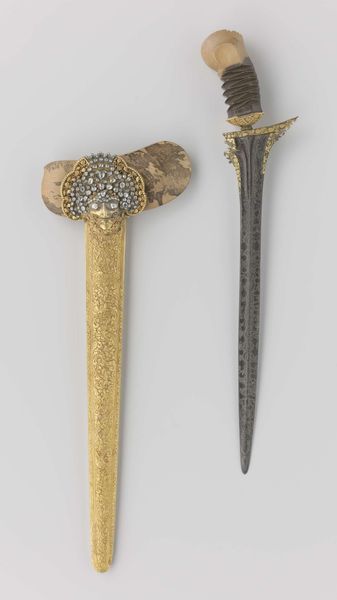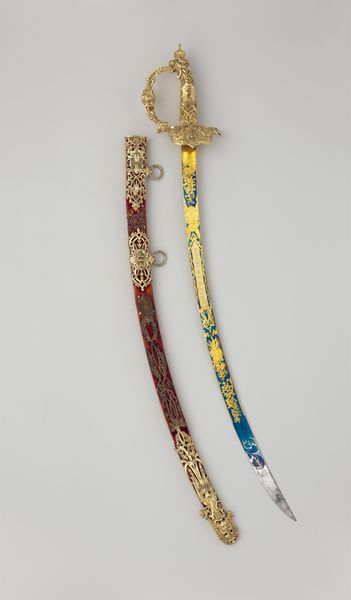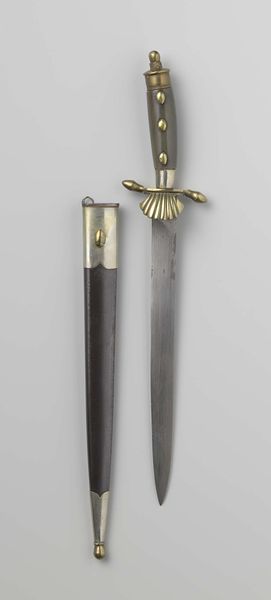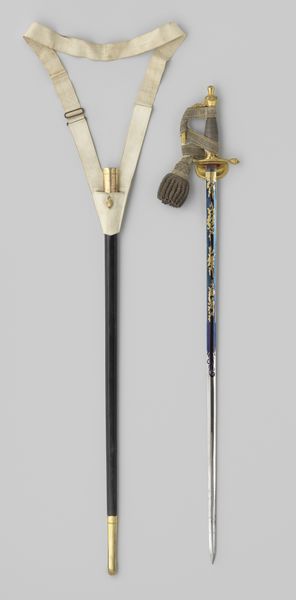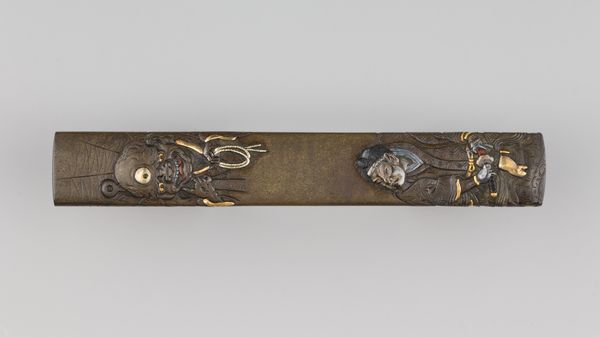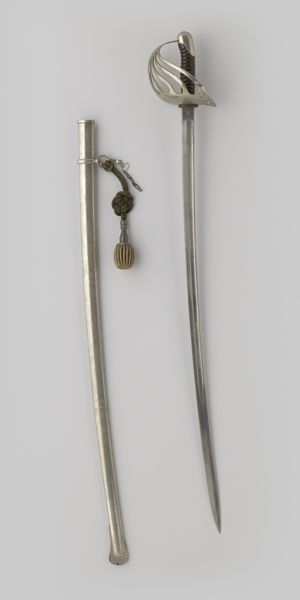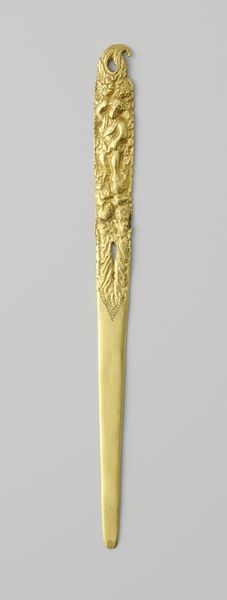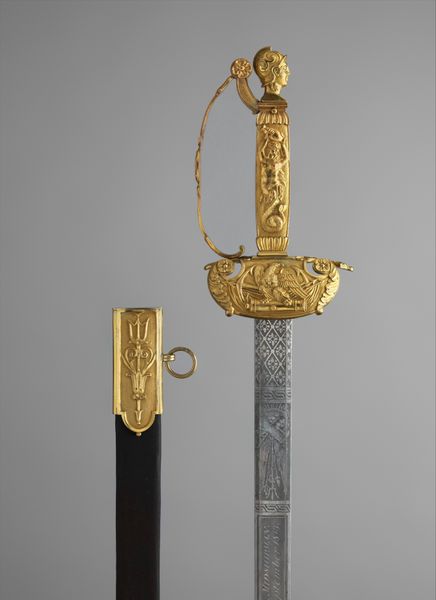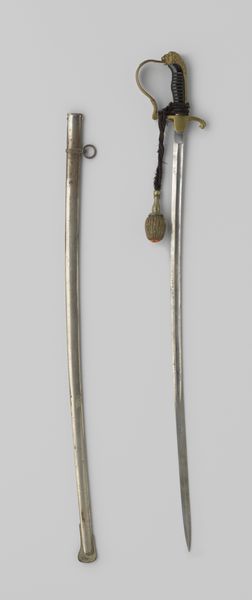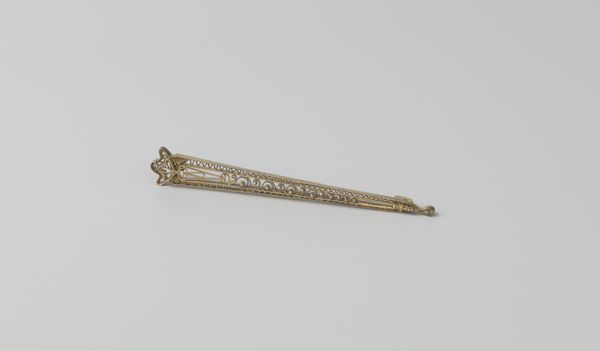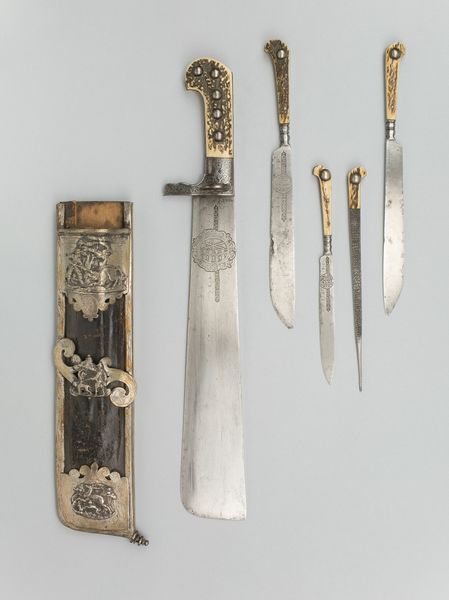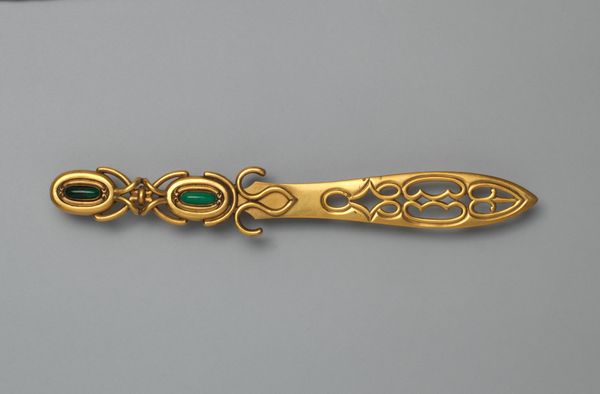
metal, ivory
#
dutch-golden-age
#
metal
#
ivory
Dimensions: length 15 cm, length 6.5 cm, weight 19 cm, length 14.6 cm, length 6.5 cm, weight 26 gr, width 1.2 cm, length 11.9 cm, width 0.9 cm, weight 46 gr
Copyright: Rijks Museum: Open Domain
Curator: Look at this captivating object from around 1650. The museum catalogues it as "A Knife and Fork in Sheath." It's presented as a testament to Dutch Golden Age artistry. Editor: Oh, my goodness. Even something as simple as eating utensils feels so luxurious and ornate! The overall impression I get is that dining during the Golden Age wasn't just about food; it was theater. Curator: Precisely. Note the composition. A fork, a pick, and a knife with their ornately decorated ivory handles lay parallel with their protective sheath displayed alongside it. The artist focuses on the horizontal arrangement and decorative density, allowing our gaze to travel uninterrupted along its ivory axis. Editor: Ivory, metal and… linen, maybe, for the sheath? There's something almost medieval about the set. You know, it's like a knight's kit, only for banquets. Is it weird that the knife looks so well-used while everything else appears ceremonial? Curator: The knife's weathered blade introduces a dialogue between function and spectacle. Note how the artist's medium of metal interacts with time—introducing visual levels to the overall impact. Its utilitarian wear disrupts any semblance of pristine symmetry or ideal form. The entire setting transcends simple presentation by embodying this tension of eras. Editor: Right? It feels honest. The wear humanizes the object, tells a story of shared meals, lively conversation, perhaps. That knife connects us to some long-ago Dutch diner. I imagine them using it during raucous, Rembrandt-lit feasts. Did the paintings we see mirror their actual lives? Curator: We can assert that in the symbolic visual language employed, there is evidence the still life as a genre of art aimed to convey symbolic notions about mortality, ephemerality and indeed the pleasures of domestic life. But beyond its representation, how was its consumption determined through the act of observing itself. These considerations determine any meaning about art. Editor: That's heavy! Art consuming itself while depicting daily life. All I know is staring at it now, I’m craving a proper old Dutch cheese. And maybe thinking that even a humble meal can be, well, art. Curator: A resonant note to end on indeed; where visual experience shapes one's historical perception of quotidian pleasures within its rich context. Editor: Here's to fancy forks and even fancier food for thought!
Comments
No comments
Be the first to comment and join the conversation on the ultimate creative platform.
